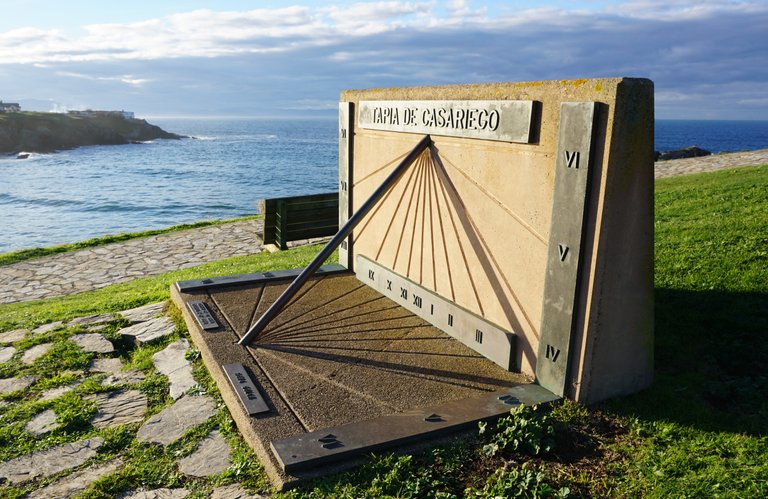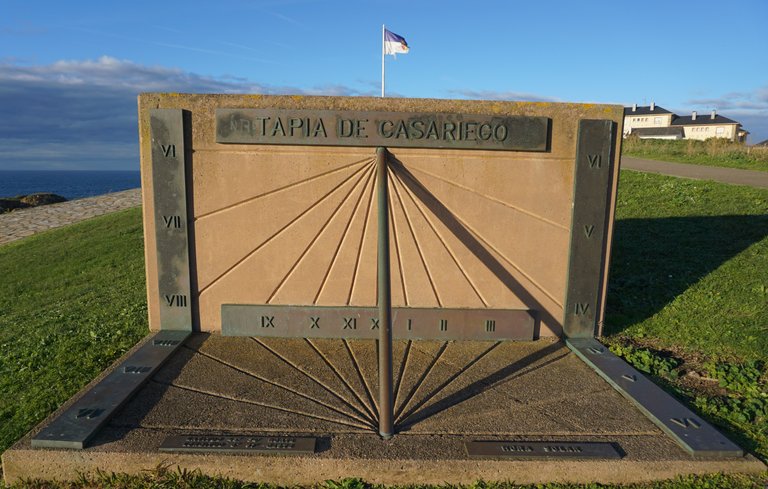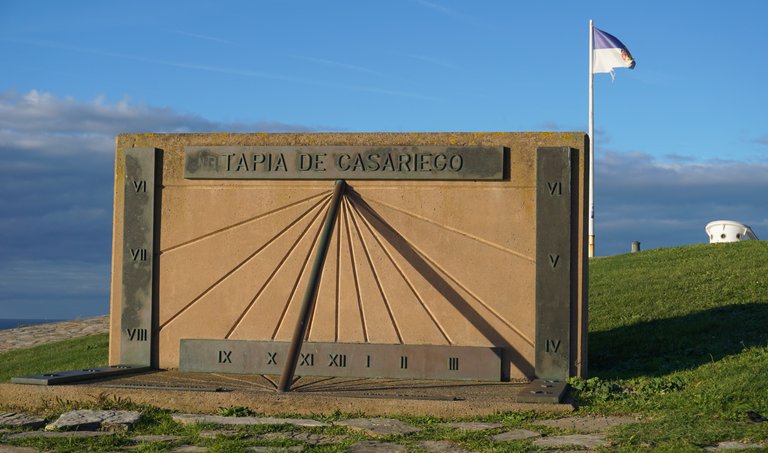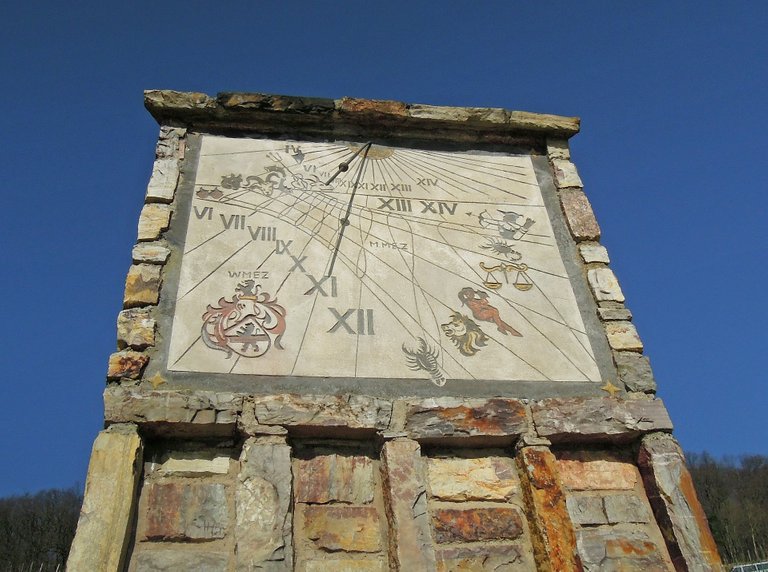Sundial: History, functioning and types
Hi friends,
I was strolling along the promenade of Tapia de Casariego this past holiday when I came across a beautiful sundial.

Do you know how it works and the history of this kind of clocks?
Sundials are instruments designed to measure the passing of time through the movement of the sun. They are represented graphically by the shadow produced by a stylus, called a "gnomon" or "style". This representation is made on a board or support engraved with different markings, so that one obtains the information relating to solar time.

A bit of history
The Egyptians, in the 15th century BC, divided the night into certain equal parts, based on the appearance of certain stars in the sky. Studies indicate that the pyramids of Egypt were already oriented in a certain way and that the obelisks designed during this historical period may have already complied with this idea of solar measurement. However, it was not until Greek and Roman times that there began to be some evidence of these sundials.

How they work
As we have already indicated, the basis of the sundial is based on the shadow cast by a stylus on a surface.
Every day, the sun rises in the east and sets in the west, passing through the south at midday, so that in 24 hours it travels 360 degrees, that is, 15 sexagesimal degrees every hour.
With this information in mind, we have to think that the sun makes its apparent motion by rotating around the Earth's axis. So the stylus that we use to form the shadow must have the same inclination of that axis. Therefore, the inclination with respect to the vertical of the place where we are must be equal to the latitude in which we are (the difference up to 90 degrees, therefore, with respect to a horizontal plane, which is always simpler, and which is called colatitude).
Types of sundials
Mainly, there are three types of sundials
Horizontal

Vertical

Equatorial

Although there are also other sub-variants of these types of sundials, although they are less widespread.
Unfortunately, in the evenings and on dark days these beautiful clocks do not work. But it is still wonderful to find a sundial on the street.
Regards

Own pictures taken with my Sony Alpha 6000L. Other photos from Pixabay Documentary sources: https://www.wikipedia.com and https://www.relojesdesol.com/historia.html

Congratulations @castri-ja! You have completed the following achievement on the Hive blockchain And have been rewarded with New badge(s)
Your next target is to reach 400 posts.
You can view your badges on your board and compare yourself to others in the Ranking
If you no longer want to receive notifications, reply to this comment with the word
STOPTo support your work, I also upvoted your post!
Check out our last posts:
Your content has been voted as a part of Encouragement program. Keep up the good work!
Use Ecency daily to boost your growth on platform!
Support Ecency
Vote for new Proposal
Delegate HP and earn more
I've never seen these varieties of sundials! This is a fascinating article. 👏
!ALIVE
@castri-ja! You Are Alive so I just staked 0.1 $ALIVE to your account on behalf of @wandrnrose7. (5/10)
The tip has been paid for by the We Are Alive Tribe through the earnings on @alive.chat, feel free to swing by our daily chat any time you want.

Thanks
I had seen several but never stopped to study them.
It has been a pleasant experience to study a little of their history and operation for this post.
!LUV
!PIZZA
@wandrnrose7, @castri-ja(2/3) sent you LUV. | tools | discord | community | HiveWiki | NFT | <>< daily
NFT | <>< daily
I gifted $PIZZA slices here:
@castri-ja(2/5) tipped @apineda (x1)
castri-ja tipped wandrnrose7 (x1)
Send $PIZZA tips in Discord via tip.cc!
I had read at some point of this type of clocks, but the truth had never seen one, I had not looked for it, thank you very much for bringing it and share it in images and give their respective explanation. I think that ancient civilizations had a great wisdom, because to be able to determine the time through these clocks, involved a good analysis, a good observation to know how time passed and how to use light and shadow to have a reference, excellent.
The truth is that one cannot explain how after the Egyptians, Greeks and Romans we spent a few centuries with a great depression in terms of wisdom during the Middle Ages.
When I saw this sundial on a walk last week I was doing some research to find out how they work and what aspects to take into account. I marvelled at the importance of the angle that the baton must have depending on the latitude we are at for it to be a good sundial.
!PIZZA
Thanks for your contribution to the STEMsocial community. Feel free to join us on discord to get to know the rest of us!
Please consider delegating to the @stemsocial account (85% of the curation rewards are returned).
You may also include @stemsocial as a beneficiary of the rewards of this post to get a stronger support.